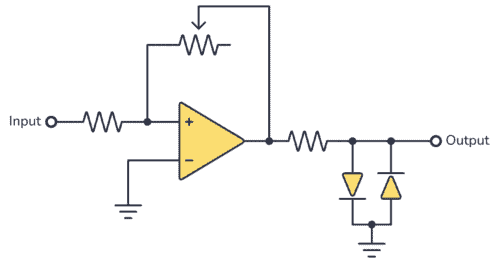A diode is a component that lets current flow in one direction and blocks it from flowing in the other direction. It has two pins; anode and cathode.
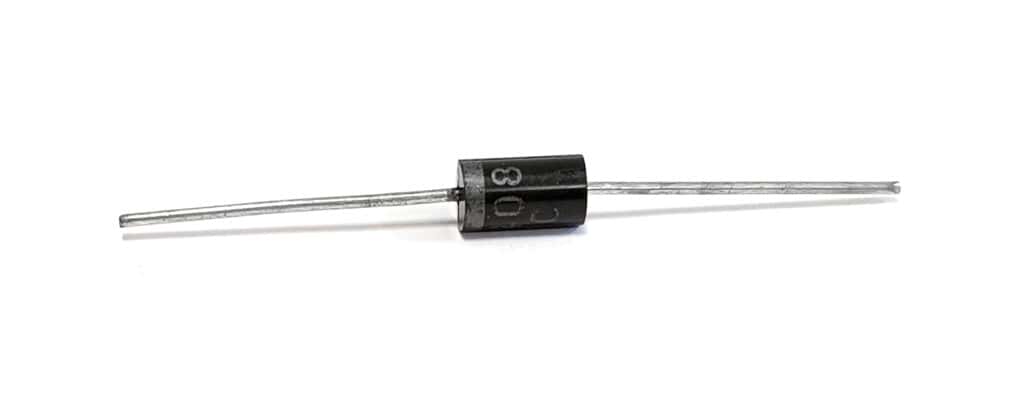
The diode symbol looks like an arrow pointing toward a line. The line represents the cathode side, and so does the line marking on the diode component itself. In the picture above, the line marking is on the left side, so that’s the cathode side.

How To Connect A Diode in a Circuit?
A diode will block or let current flow, depending on how you connect it in a circuit. Below you can see an example circuit.
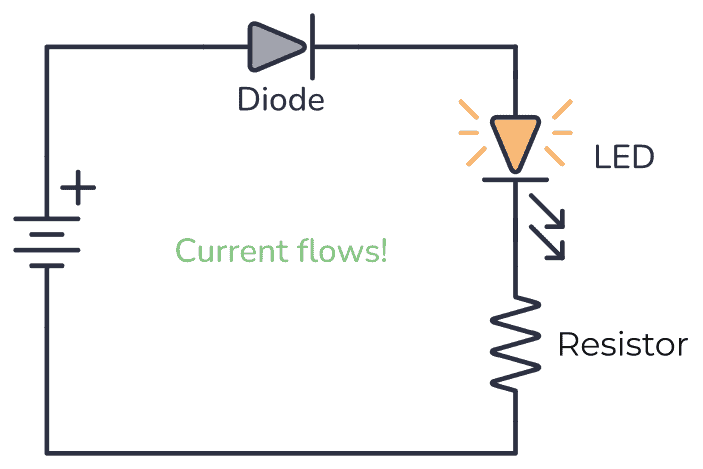
In the circuit above the diode is connected in the right direction. This means current can flow through it so that the Light-emitting diode (LED) will light up.
But what happens if we connect it the other way around?
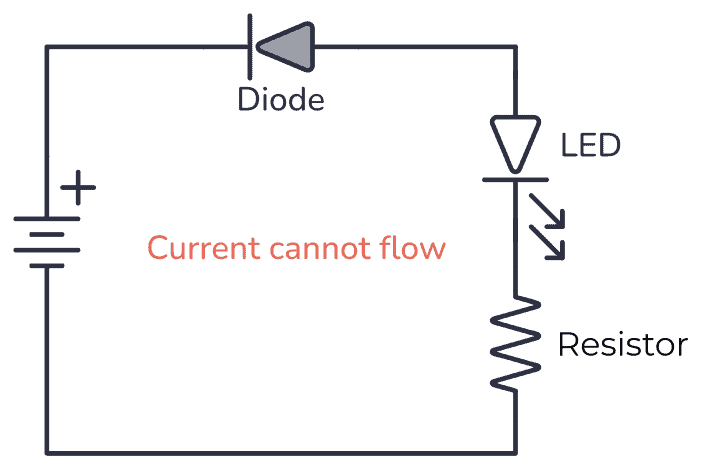
In this second circuit, the diode is connected the wrong way. This means that no current will flow in the circuit and the LED will be turned OFF.
What Is a Diode Used For?
A standard diode can be used for a range of things, from creating sound effects to power supplies. Below, you can see a few circuit examples with an explanation of what the diode is used for:
Sound Effects Clipping: By placing two diodes in parallel in opposite directions, you can get a clipping effect which creates an overdrive sound effect, often used in guitar pedals.
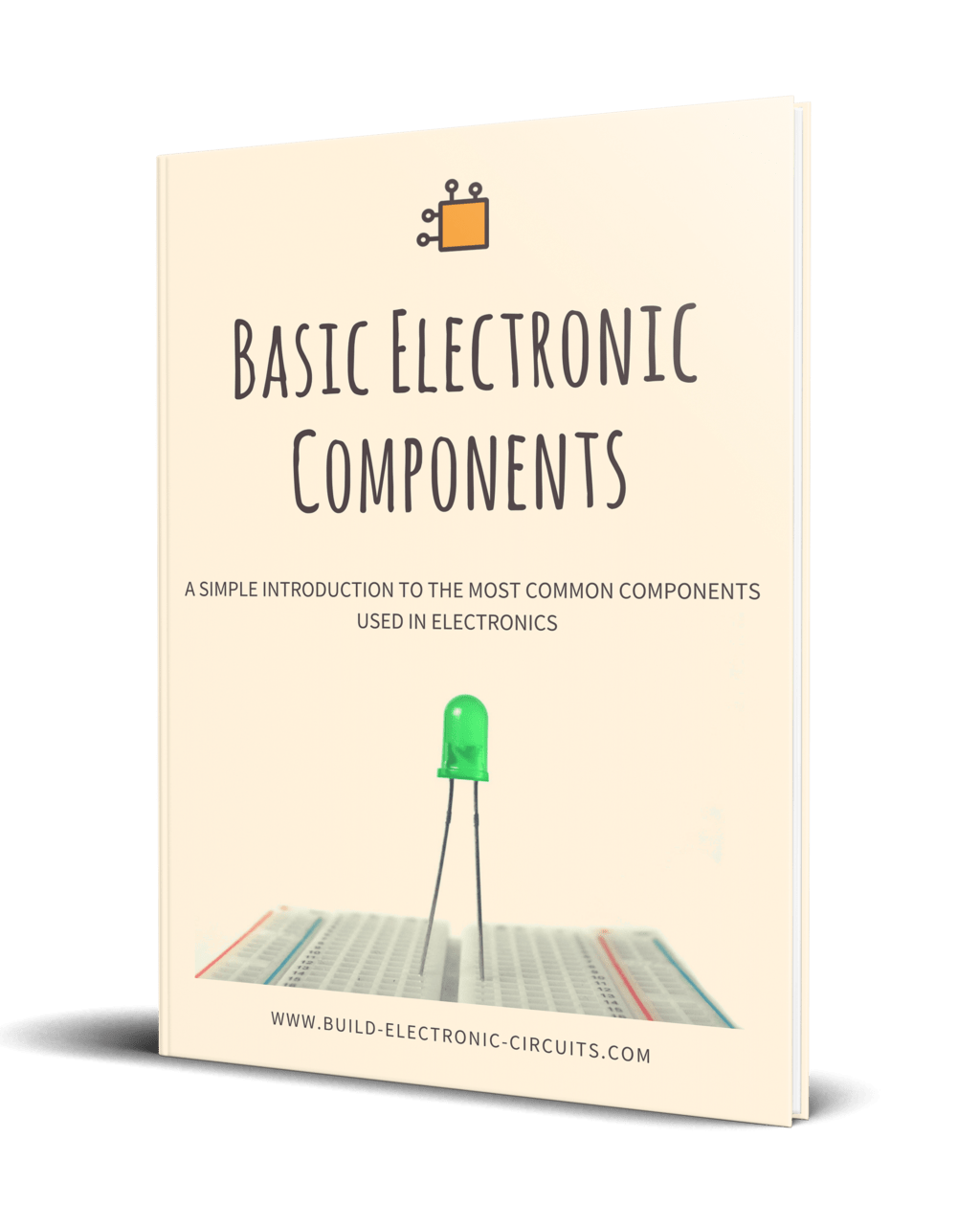
Get Our Basic Electronic Components Guide
Learn how the basic electronic components work so that circuit diagrams will start making sense to you.
Converting from AC to DC: Sometimes diodes are used to convert from AC to DC by placing four rectifier diodes to create a bridge rectifier. This is often used after a transformer in a power supply, followed by a voltage regulator.

Protecting from voltage spikes: Components like motors and relays are basically inductors, which means their current will try to keep on flowing after the power is shut off. Diodes are used to safely discharge them.
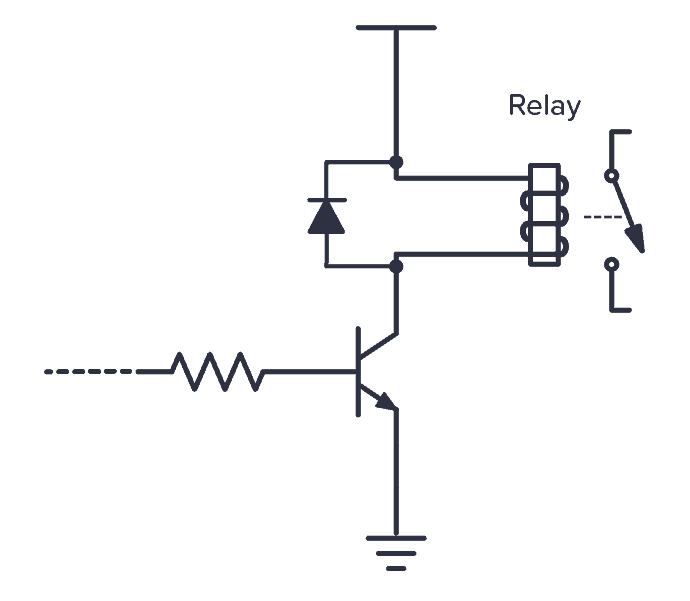
How a Diode Works
The diode is created from a PN junction. You get a PN junction by taking a negatively doped and positively doped semiconductor material and putting it together.
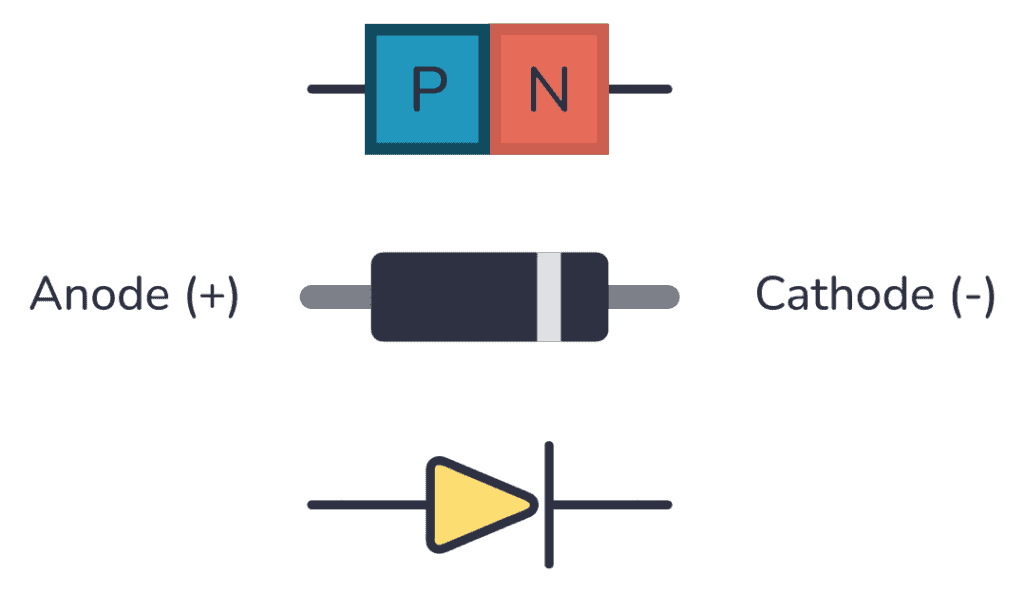
At the intersection of these two materials, a depletion region appears. This depletion region acts as an insulator and refuses to let any current pass.
When you apply a positive voltage from the positive side to the negative side, the depletion layer between the two materials disappears and the current can flow from the positive to the negative side.
When you apply a voltage in the other direction, from the negative to the positive side, the depletion region expands and resists any current flowing.
How To Test Diodes With a Multimeter
You can test diodes with a multimeter to find the forward voltage. To test your diode, you need a multimeter with a diode function. If you see a diode symbol on your multimeter, that’s most likely your diode function.
- Connect the positive test lead to the diode’s anode.
- Connect the negative test lead to the diode’s cathode.
- The multimeter display will show you the forward voltage of your diode.
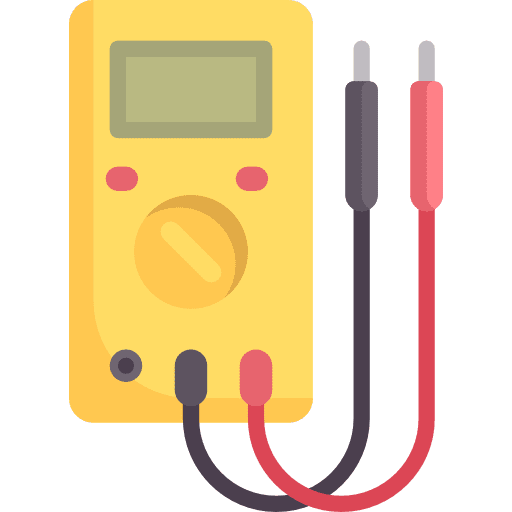
Things To Note About Diodes
- You have to apply enough voltage in the “right” direction – from positive to negative – for the diode to start conducting. Usually, this voltage is around 0.7 V to 1 V.
- It has limits and cannot conduct unlimited amounts of current.
- Diodes are not perfect components. If you apply voltage in the wrong direction, there will be a little bit of current flowing. This current is called leakage current.
- If you apply a high enough voltage in the “wrong” direction, the diode will break down and let current pass in this direction too.
Types of Diodes
There are many different types of diodes. The most common ones are:
- Signal diode
- Rectifier diode
- Zener diode
- Light-Emitting Diodes (LED)
- Schottky Diode
- Photodiode
- PIN diode
Signal and rectifier diodes are pretty much the same things except that rectifier diodes are built to handle more power.
Zener diodes are diodes that make use of the breakdown voltage when applying voltage the “wrong” way. They act as very stable voltage references.
Schottky Diodes have a lower forward voltage drop and faster switching speeds than standard signal diodes.
Photodiodes are diodes that are sensitive to light. They let current flow through them when exposed to light.
Light-Emitting Diodes (LED) are components that light up when current flows through them.
Questions
Do you have any questions about diodes or any feedback you want to share? Let me know in the comment field below!
More Diodes Tutorials
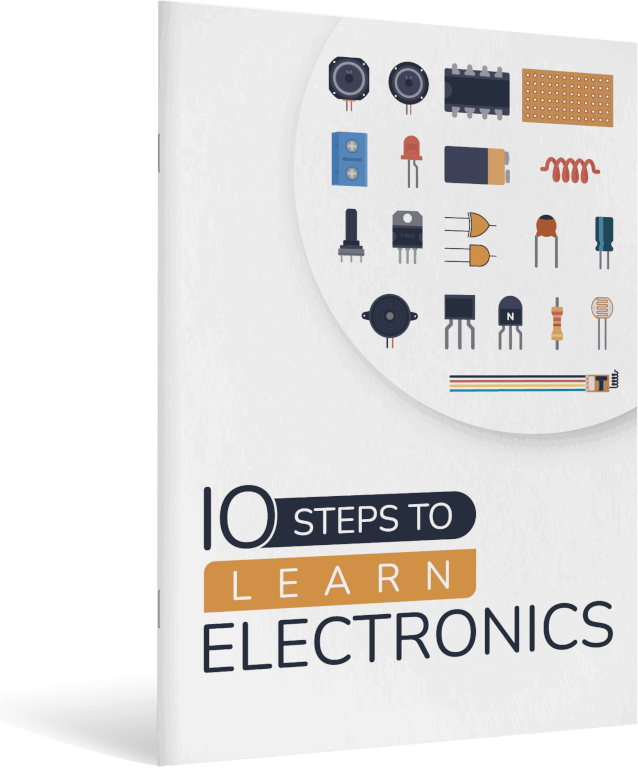
10 Simple Steps to Learn Electronics
Electronics is easy when you know what to focus on and what to ignore. Learn what "the basics" really is and how to learn it fast.

